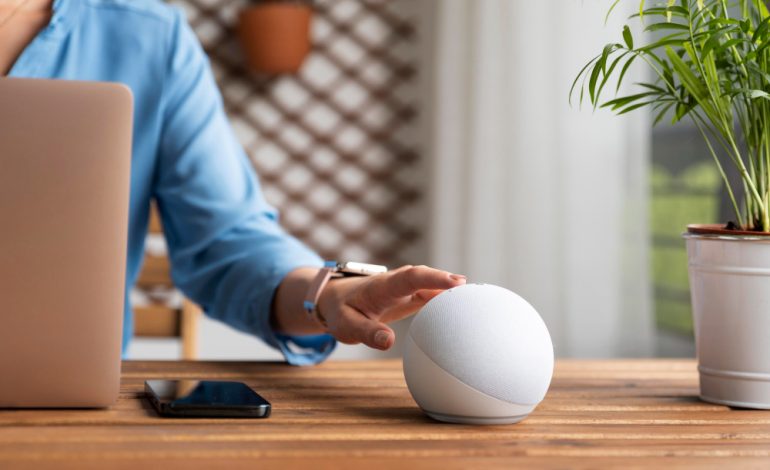
Future Technologies: What Is Already Changing Our Daily Lives
From Science Fiction to Everyday Reality
Not long ago, many of the technologies we now use daily existed only in science fiction novels, blockbuster films, or the imaginations of futurists. Artificial intelligence, voice-activated assistants, self-driving vehicles, smart homes, and immersive digital environments were far from reality for the average person. Today, however, they are gradually becoming part of the invisible infrastructure of our lives, moving from novelty to necessity and quietly reshaping how we live, work, and interact with the world.
Take artificial intelligence (AI), for example. Many people associate AI with futuristic machines or human-like robots, but in truth, AI is already deeply integrated into our lives—and most of us don’t even realize it. Autocorrecting text on your smartphone, personalized suggestions on streaming platforms, fraud detection in banking, or traffic predictions on navigation apps all rely on AI algorithms. In workplaces, AI is transforming industries by handling repetitive tasks, analyzing data faster than humans ever could, and freeing people to focus on more creative or strategic thinking.
Smart assistants and Internet of Things (IoT) devices have also made their way into our daily routines. A connected home today can automatically adjust lighting, regulate the thermostat, order groceries, or lock the front door with a simple voice command. The once futuristic concept of a “talking home” is now widely considered normal. The more these devices learn from user habits, the more they seamlessly adjust to our lifestyles, making technology feel almost invisible—a natural extension of the environment rather than a noticeable gadget.
Transportation is undergoing a profound transformation too. While fully autonomous cars are not yet common on every street, driver-assist technologies and partially self-driving features are already embedded in modern vehicles. Systems that automatically brake in emergencies, keep cars in lane, or optimize routes are widely available, making driving safer and more efficient. Meanwhile, autonomous delivery robots and drone systems are beginning to reshape how goods arrive at our doorsteps, hinting at future logistics networks that may operate nearly entirely without human intervention.
Healthcare presents another area where futuristic visions have quickly become reality. We are witnessing tremendous strides in telemedicine, AI-driven diagnostics, wearable health monitors, and even remote robotic surgeries. A smartwatch can now detect irregular heartbeats or measure blood oxygen levels in real time, sending alerts that may save lives. AI diagnostic tools are helping doctors detect illnesses like cancer at earlier stages than ever before. These innovations are not just improving healthcare in hospitals—they are bringing preventive care and personalized health insights directly into the home, blurring the line between patient and provider environments.
Finally, we cannot ignore how immersive digital spaces are reshaping interaction, entertainment, and even work. Augmented and virtual reality platforms, once considered niche, are increasingly used in everything from education to remote collaboration. Students can explore ancient civilizations through VR simulations; architects can present 3D walkthroughs of designs; and professionals can collaborate in virtual spaces that bridge physical distance. These environments create new norms of social and professional engagement while redefining what “presence” means.
Together, these technologies signal a profound transformation. What was once imagined is now woven into daily life, often unnoticed. Tools that once seemed experimental now serve as the infrastructural backbone of society, enabling seamless connectivity, constant adaptability, and personalized experiences that subtly but fundamentally alter human expectations.
Beyond Gadgets and Convenience
While technologies like AI-powered assistants or VR headsets can sometimes feel like consumer luxuries, the truth is that what’s unfolding extends far beyond convenience. Renewable energy systems, biotechnology, advanced robotics, blockchain, and next-generation communication networks are shaping critical aspects of society in ways that reach every sector—from education to global economies.
Consider renewable energy technologies. Solar panels and wind farms are no longer boutique environmental projects but central components of national energy strategies. As more homes, businesses, and cities adopt renewable power, energy independence and sustainability are becoming real possibilities. At the same time, innovations in battery storage and smart grids are allowing energy to be managed more efficiently, helping societies reduce reliance on fossil fuels and fostering greater resilience against climate change.
In biotechnology, innovations such as gene-editing tools, lab-grown organs, and advanced pharmaceuticals open up new horizons for healthcare delivery. Breakthroughs in precision medicine allow treatments to be tailored to individuals rather than applied universally, improving outcomes and reducing side effects. But these advances also spark deep ethical debates—what should the limits of genetic engineering be, and how does society ensure equitable access to cutting-edge care?
Wearable health technologies are another case in which personal devices play a bigger social role. Beyond counting steps or measuring sleep, advanced wearables are monitoring stress levels, detecting diseases earlier, and even predicting possible health risks. These devices empower individuals to take charge of their health, while giving healthcare professionals ongoing data to adapt treatments dynamically—creating a partnership that redefines patient care.
The creative and professional worlds are also being reshaped by augmented and virtual reality platforms. The arts, education, and entertainment industries now incorporate immersive technologies into storytelling, training, and learning. Beyond enhancing engagement, these experiences are paving the way for cultural shifts in how humans perceive and interact with information.
In the industrial sphere, advanced robotics are revolutionizing manufacturing, logistics, and even home care. Robots today range from warehouse machines optimizing supply chains to robotic assistants aiding the elderly at home. The implications for labor are profound—jobs are being redefined, certain roles displaced, and new careers in robotics maintenance and programming created. This forces individuals and communities to continuously adapt, retrain, and evolve within an ever-changing job market.
Blockchain technology extends beyond cryptocurrency speculation and into areas such as secure voting systems, transparent supply chains, contract automation, and decentralized digital identities. These applications are shifting how societies think about trust, privacy, and security in the digital age. Yet, they also highlight new risks, including regulation challenges and cybersecurity concerns that must be addressed as adoption scales.
Similarly, next-generation communication technologies, particularly 5G and beyond, have dramatically expanded global connectivity. Enhanced bandwidth and ultra-low latency not only make mobile browsing faster—they enable real-time interactions critical for fields like telemedicine, smart city infrastructure, and autonomous vehicle networks. These communication platforms facilitate deeper integration between the digital and physical realms, creating dependency while also fueling innovation.
As these breakthroughs converge, they are not only enhancing tasks or healthcare but also influencing cultural values, global economics, education systems, and ethical frameworks. Each advancement generates new conversations about privacy, labor, environmental sustainability, and human responsibility. They push societies to rethink traditional models of living, working, and governing.
We are at a unique moment in history where the present is both a test and a preview. The technologies already surrounding us demonstrate not just progress, but a profound shift in how humanity organizes itself. Small, everyday adjustments—from speaking to AI assistants, to charging electric cars, to wearing health trackers—are fragments of a larger transformation. They remind us that what feels ordinary today is, in fact, a glimpse of the future rapidly unfolding.
Future technologies are no longer distant concepts. They are already embedded in our routines, shaping environments, patterns of thought, and collective behaviors. What once seemed extraordinary is now expected, and in many cases, essential. From AI to renewable energy, from immersive digital platforms to biotechnology, these innovations carry both immense promise and pressing challenges.
What emerges is a clear realization: the present is not just an age of convenience. It is an age of recalibration, where everyday integrations of technology are setting the foundation for tomorrow’s society. The future is not approaching—it is here, already living quietly in the fabric of our daily lives.





